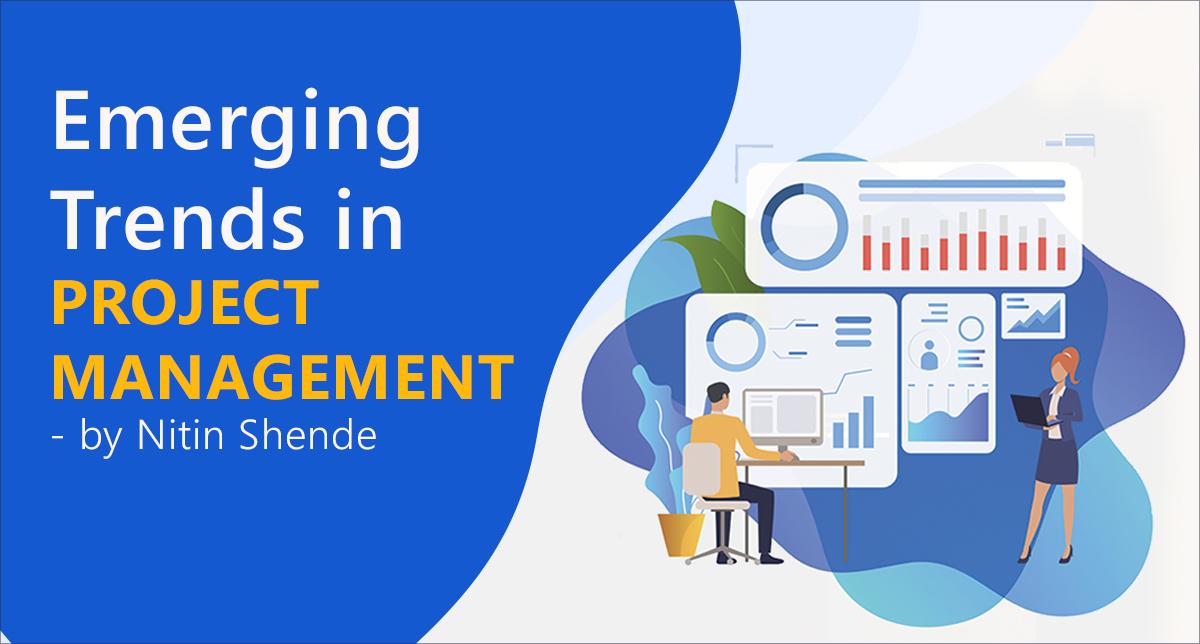
Emerging trends in Project Management by Nitin Shende (Sprint one)
We are cognizant that the strength of the ‘waterfall model’, the traditional Project Management approach is based on Scope, Schedule and Cost baselines defined to a good extent. Milestones, phase exit criteria, go-no-go decision and associated deliverables are defined which increases the probability of meeting stakeholder needs. At the same time, there are some drawbacks like ‘limited interaction with end-users (initial stage & deliverable stage), difficult to manage changing requirements of end-users and phase-based dependency on skilled resources’, etc.
Projects having “unclear, inexplicit scope, constraints over resource availability and aggressive schedules, etc.” were on the rise which resulted in elevating the risks about product or services putting in practice. In order to effectively respond to these types of risks, the ‘iterative incremental’ approach was practiced which was progressively elaborated to an adaptive way, called ‘Agile’. Here customer interaction is more frequent due to smaller delivery cycles. Smaller cycles also helps in adapting to end-user requirement changes more efficiently. The simple process framework focuses more on continuous value addition to the customer. It also has different approaches to manage small, medium and large projects.
But in cases where certain regulatory limitations require the functionality to be deployed by particular schedules or organizations lacking the work culture required to support agile work environment, agile approach may not benefit the organizations.
Summary:
"Waterfall methodology adheres to meticulous scope definition and delivers to plan. In distinction with this, an agile approach allows the solution to develop with adherence to timelines and budgetary constraints in order to provide high-quality value in the minimum possible time. Both of them have certain drawbacks for particular types of projects as stated above".
So, what project management approach is right?
The answer is any approach ‘that satisfies the majority of major stakeholders' majority of the times’ is a correct approach.
With this mindset a new thought process emerged, consists of synchronizing strength of Waterfall and Agile and minimizing the drawbacks to get utmost stakeholder satisfaction. This integration is called a Hybrid project management approach.
More details on the “Hybrid Project Management Approach” will be published in ‘Sprint - Two’ :)
Author
Nitin Shende,
PMP®, PMI-PBA®, Prince2® Practitioner, QPMP®, CSM®, Six Sigma Green Belt
Vice President & Project Management Consultant
Vinsys IT Services (I) Pvt. Ltd. www.vinsys.com
We are cognizant that the strength of the ‘waterfall model’, the traditional Project Management approach is based on Scope, Schedule and Cost baselines defined to a good extent. Milestones, phase exit criteria, go-no-go decision and associated deliverables are defined which increases the probability of meeting stakeholder needs. At the same time, there are some drawbacks like ‘limited interaction with end-users (initial stage & deliverable stage), difficult to manage changing requirements of end-users and phase-based dependency on skilled resources’, etc.
Projects having “unclear, inexplicit scope, constraints over resource availability and aggressive schedules, etc.” were on the rise which resulted in elevating the risks about product or services putting in practice. In order to effectively respond to these types of risks, the ‘iterative incremental’ approach was practiced which was progressively elaborated to an adaptive way, called ‘Agile’. Here customer interaction is more frequent due to smaller delivery cycles. Smaller cycles also helps in adapting to end-user requirement changes more efficiently. The simple process framework focuses more on continuous value addition to the customer. It also has different approaches to manage small, medium and large projects.
But in cases where certain regulatory limitations require the functionality to be deployed by particular schedules or organizations lacking the work culture required to support agile work environment, agile approach may not benefit the organizations.
Summary:
"Waterfall methodology adheres to meticulous scope definition and delivers to plan. In distinction with this, an agile approach allows the solution to develop with adherence to timelines and budgetary constraints in order to provide high-quality value in the minimum possible time. Both of them have certain drawbacks for particular types of projects as stated above".
So, what project management approach is right?
The answer is any approach ‘that satisfies the majority of major stakeholders' majority of the times’ is a correct approach.
With this mindset a new thought process emerged, consists of synchronizing strength of Waterfall and Agile and minimizing the drawbacks to get utmost stakeholder satisfaction. This integration is called a Hybrid project management approach.
More details on the “Hybrid Project Management Approach” will be published in ‘Sprint - Two’ :)
Author
Nitin Shende,
PMP®, PMI-PBA®, Prince2® Practitioner, QPMP®, CSM®, Six Sigma Green Belt
Vice President & Project Management Consultant
Vinsys IT Services (I) Pvt. Ltd. www.vinsys.com

Vinsys Top IT Corporate Training Company for 2025 . Vinsys is a globally recognized provider of a wide array of professional services designed to meet the diverse needs of organizations across the globe. We specialize in Technical & Business Training, IT Development & Software Solutions, Foreign Language Services, Digital Learning, Resourcing & Recruitment, and Consulting. Our unwavering commitment to excellence is evident through our ISO 9001, 27001, and CMMIDEV/3 certifications, which validate our exceptional standards. With a successful track record spanning over two decades, we have effectively served more than 4,000 organizations across the globe.
